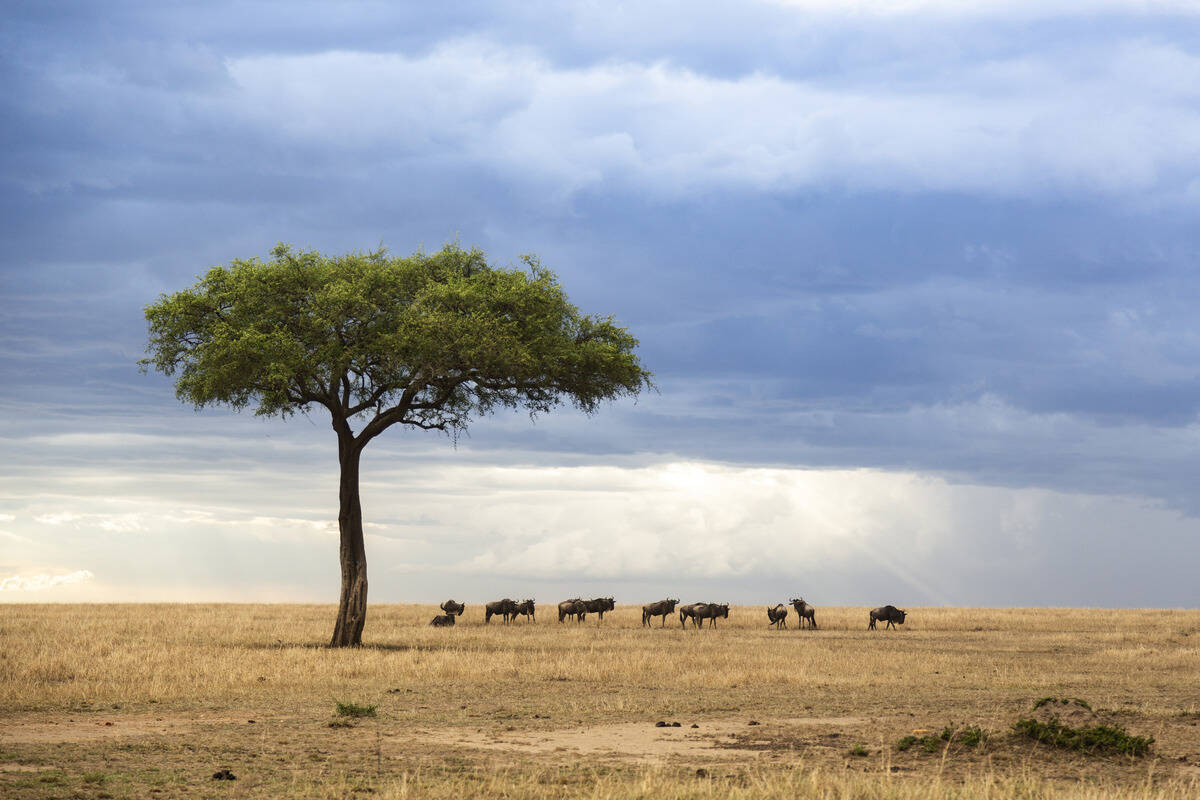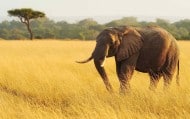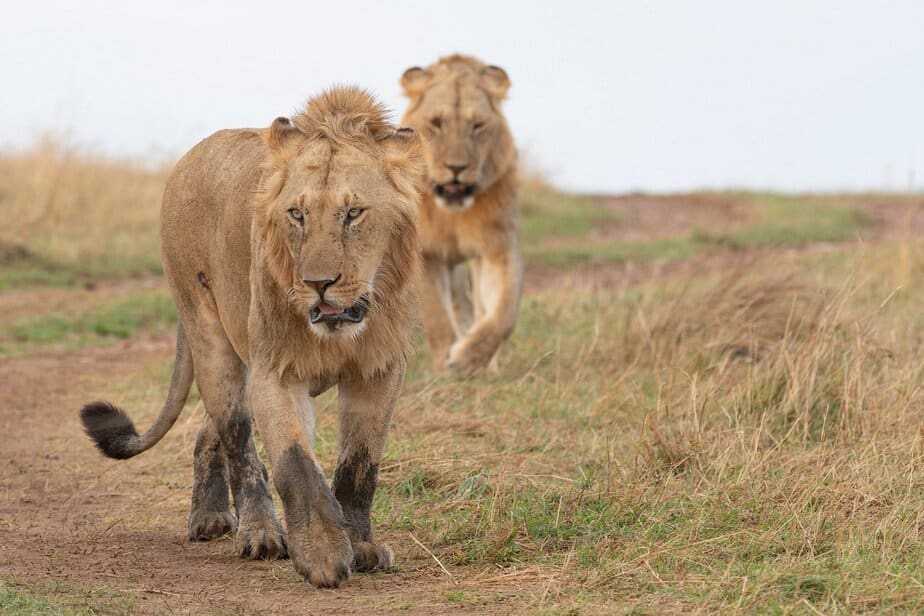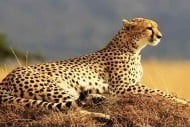
The Great Wildebeest Migration in Masai Mara, Kenya
The Great Wildebeest Migration in Masai Mara, Kenya: A Bucket List Safari Experience
Introduction
Every year, a thunderous spectacle unfolds across the vast savannahs of East Africa — the Great Wildebeest Migration. Recognized as one of the Seven New Wonders of the World, this annual event sees over 1.5 million wildebeests, accompanied by hundreds of thousands of zebras and gazelles, journey across the Serengeti-Mara ecosystem. Their destination? The lush plains of Kenya’s Masai Mara, a place where life, death, and survival play out on a grand, cinematic scale.
If you’ve ever dreamt of witnessing raw nature in motion, the Great Wildebeest Migration in Masai Mara is the ultimate bucket list safari experience. Whether you’re a wildlife enthusiast, photographer, or adventurer, the migration promises unforgettable memories.
In this guide, we’ll explore:
- What the Great Migration is
- When and where to witness it
- Why Masai Mara is the prime viewing location
- Safari tips and travel planning
- Lodges and camps with front-row seats
- Responsible tourism and conservation efforts
Let’s dive into nature’s greatest show on Earth.
1. What is the Great Wildebeest Migration?
The Great Wildebeest Migration is the largest land animal migration on the planet. This annual journey spans approximately 1,800 miles, beginning in Tanzania’s Serengeti National Park and culminating in Kenya’s Masai Mara National Reserve.
Key Players:
- Wildebeests: The main travelers, numbering around 1.5 million.
- Zebras: About 250,000 zebras join the migration, often leading the charge.
- Thomson’s and Grant’s gazelles: Around 500,000 participate.
- Predators: Lions, cheetahs, leopards, hyenas, and crocodiles follow the herds, making this a dramatic survival saga.
Why do they migrate?
The migration is driven by the search for fresh grazing and water. Following seasonal rains, the animals move in a circular pattern through Tanzania and Kenya.
2. The Migration Cycle: Month-by-Month Breakdown
Understanding the timeline of the migration is crucial for planning your safari.
January – March: Calving Season (Southern Serengeti)
- Location: Ndutu Plains, southern Serengeti
- Wildebeests give birth to over 500,000 calves.
- Easy prey attracts predators — excellent for action photography.
April – May: Movement Northward
- Rainy season makes roads muddy but crowds are fewer.
- Herds begin moving northwest as the plains dry out.
June: Grumeti River Crossings (Western Corridor)
- The first major river crossing, though less dramatic than the Mara.
- Herds gather in large numbers, preparing for the next leg.
July – October: Mara River Crossings (Masai Mara, Kenya)
- Peak safari season.
- The most thrilling part of the migration: crossing the crocodile-infested Mara River.
- Iconic scenes of panic, stampedes, and survival.
November – December: Return South
- The herds begin their journey back to the Serengeti as the short rains start.
3. Why the Masai Mara Is the Best Place to Witness the Migration
1. Mara River Crossings
The Mara River crossings are the migration’s highlight. Thousands of wildebeests plunge into the river, braving strong currents and Nile crocodiles. The chaos and intensity are unmatched.
2. Predator Action
Masai Mara has one of the highest densities of lions in Africa. The migration brings in a buffet for predators, making this the ideal location for witnessing nature’s raw drama.
3. Accessibility and Infrastructure
- Easy access via daily flights from Nairobi.
- Well-established safari lodges, guides, and conservation policies.
4. Cultural Experience
The Maasai people, with their rich culture and traditional lifestyle, offer a unique cultural immersion alongside your wildlife experience.
4. Best Time to Visit Masai Mara for the Migration
July to October is the best time to visit for the Great Migration.
- July–August: First crossings at the Mara River.
- September: Herds are fully settled in the Mara; predator action peaks.
- October: Last chance to witness crossings before the return south.
Tips:
- Book at least 6 to 12 months in advance.
- Travel during the shoulder season (June or October) for fewer crowds.
5. Top Camps and Lodges for Migration Viewing
Here are the best safari lodges and camps strategically located near migration hotspots:
1. Governors’ Camp
- Located along the Mara River.
- Historic camp with luxury tents and superb guiding.
2. Kichwa Tembo Tented Camp (by &Beyond)
- Situated on a private concession.
- Great views of the Oloololo Escarpment and wildlife corridors.
3. Mara Serena Safari Lodge
- Built on a hill with panoramic views of the Mara River.
- Ideal for witnessing crossings.
4. Rekero Camp
- Set near a popular crossing point.
- Excellent for photographers and return safari-goers.
5. Angama Mara
- Ultra-luxurious, perched above the Great Rift Valley.
- Inspired by “Out of Africa”; includes Maasai cultural experiences.
6. Wildlife Beyond Wildebeests
While wildebeests steal the show, the Masai Mara is teeming with other wildlife:
- Big Cats: Lions, leopards, cheetahs
- Elephants and buffalos
- Giraffes, hippos, and warthogs
- Birds: Over 470 bird species, including the lilac-breasted roller
7. Tips for Planning Your Migration Safari
1. Choose the Right Operator
- Go for experienced, locally-based companies with expert guides.
- Look for eco-certifications.
2. Private vs. Group Safari
- Private safaris offer flexibility, personalized guides, and exclusivity.
- Group safaris are budget-friendly but less customizable.
3. Safari Vehicles
- Opt for 4×4 Land Cruisers with pop-up roofs for better viewing.
- Ask about window seats for photography.
4. Pack Right
- Neutral clothing (avoid white or bright colors)
- Binoculars, sunscreen, insect repellent
- Layered clothing for chilly mornings and warm afternoons
8. Photography Tips for Capturing the Migration
- Use a telephoto lens (at least 200mm–400mm)
- Shoot during golden hours — early morning or late afternoon
- Stabilize with a beanbag or tripod
- Capture wide shots for the herds and close-ups for predator-prey moments
- Don’t forget action sequences — river crossings, chases, and dramatic leaps
9. Responsible Travel and Conservation
Mass tourism can negatively impact fragile ecosystems. Consider these steps:
Support Community-Based Tourism
- Stay at lodges that employ local Maasai staff.
- Participate in cultural visits respectfully.
Minimize Environmental Impact
- Avoid single-use plastics
- Stick to designated tracks
- Follow wildlife viewing ethics
Donate or Volunteer
Support organizations like:
- Mara Predator Conservation Programme
- African Wildlife Foundation
- Big Life Foundation
10. Why This Should Be on Your Bucket List
The Great Migration is more than a wildlife event — it’s an emotional, spiritual, and life-changing journey.
- See life and death unfold in real time.
- Experience the ancient rhythms of nature.
- Be humbled by the scale and resilience of the animal kingdom.
- Connect with Africa’s wild heart, its people, and its stories.
Conclusion: A Safari of a Lifetime
From the dust kicked up by thundering hooves to the tense moments by the riverbanks, the Great Wildebeest Migration in Masai Mara is a safari like no other. It’s a reminder of how beautifully untamed the world can be — and why it’s crucial to protect it.
So if you’re looking to tick off an unforgettable experience from your bucket list, Masai Mara during the migration season should be at the top.
Pack your camera, open your heart to adventure, and let Africa do the rest.


